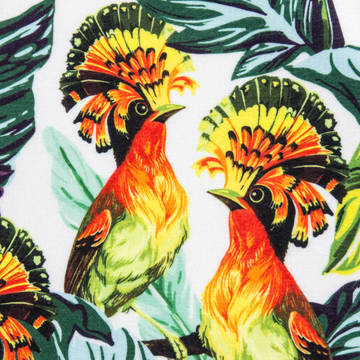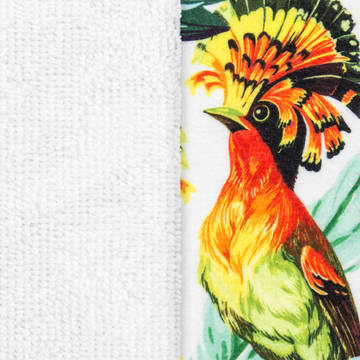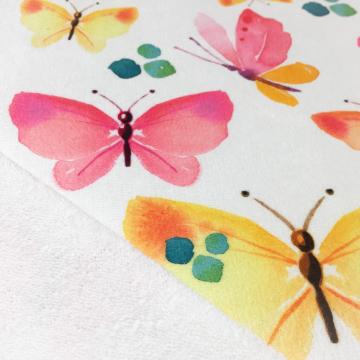If placing your products for sale, you should make sure your product at least meets these specifications.
The topic of clothes for children and babies is complex, and it is not possible to cover all potential hazards - you should carry out your own assessment when making your product to make sure it is safe for your intended use.
Size designation of clothes
Relevant Standards
- EN 13402:2002 - Size designation of clothes
Your clothes should be labelled correctly for the intended size - failure to do do can result in poor fitting clothing, being either overly restrictive or inappropriately loose.
Depending on the item of clothing, you should measure and label the pieces correctly so that they will fit correctly.
There is a good factsheet available here.
Cords and drawstrings on children's clothing
Relevant standards:
- EN 14682:2014 - Safety of children's clothing - Cords and drawstrings on children's clothing - Specifications
Cords and drawstrings on children's clothing can present a significant safety hazard. Clothes with cords or drawstrings present an entrapment risk in play equipment or moving vehicles, resulting in severe injury or death.
You must make sure that your use of cords and drawstrings on childrens clothing is appropriate, and does not present an entrapment risk, for example, loops of cord which may strangulate a child, or long dangling elements that may get caught in play equipment or moving vehicles.
General
Garments intended for young children shall not be designed, manufactured, or supplied with drawstrings or functional cords in the head, neck or upper chest area. In addition, decorative cords shall not be permitted anywhere on the hood or at the back of the neck.
Knots or three dimensional embellishments are not permitted at the free ends or along the length of free ends of cords.
Toggles should only be used on drawstrings with no free ends, or decorative cords.
Drawstrings should be attached to the garment in at least one place, in the middle (for example, using a bar tack).
Upper Body
e.g. Hoodies, tops, hats, coats
Drawstrings shall not have free ends.
No protruding loop when the garment is open to its largest maximum protruding loop circumference shall be 15 cm when garment is at it's smallest opening position.
Toggles, if used for adjustment of drawstrings, shall be fixed to the garment.
Functional cords shall not be more than 7.5 cm in length.
Functional cords shall not be made from elastic cords.
Shoulder straps shall not have free ends external to the garment when worn. Decorative cords attached to a shoulder strap shall not have free ends longer than 7.5 cm and fixed loops shall be no more than 7.5 cm in circumference.
Acceptable mechanism to affix and adjust length of a shoulder strap:
- Permanently fixed to front and back,
- Using buttons, press fasteners, provided the free end is inside the garment,
- Use of a clip or fastening of two cords, provided these do not result in free ends of cords when garment is worn,
- Ring and slider mechanism, provided the loop shall lie flat to the body when worn.
Halter neck-style garments shall be constructed with no free ends in the neck and throat.
Waist and lower
e.g. Trousers, shorts, shirts, briefs and bikini bottoms
For clothing intended for the waist and lower, garments shall not have free ends of drawstrings longer than 20 cm at each end when the garment is in a relaxed natural state. Garments shall not have functional cords longer than 20 cm, or decorative cords longer than 14cm.
Shirts, coats, dresses, dungarees
Garment shall not have free ends of drawstrings longer than 14 cm at each end when the garment is open to its largest and laid flat.
Garment shall not have protruding loops on drawstrings with no free ends when the garment is open to its largest and laid flat. Where toggles are used for adjustment of drawstrings with no free ends, the toggles shall be fixed to the garment.
Garment shall not have functional cords longer than 14 cm.
Tied belts or sashes (tied at the back)
For young children: length shall not be more than 36 cm, when measured from the point where they are to be tied and shall not hang below the hem of the garment, when untied.
For older children and young persons: length shall not be more than 36 cm, when measured from the point where they are to be tied.
Tied belts or sashes (tied at the front or side)
Length shall not be more than 36 cm, when measured from the point where they are to be tied.
Lower edge of garments which hang below the crotch
Fringes are considered as a series of decorative cords.
Drawstrings, functional cords or decorative cords including any toggle shall not hang below the lower edge of the garment.
Drawstrings, functional cords or decorative cords at the lower edges of garments shall lie flat against the garment, when the garment is tightened or fastened.
Back area
Children's garments shall not have drawstrings or functional cords that emerge from the back of the garment or to be tied at the back.
Decorative cords shall not be more than 7.5 cm in length and shall have no knot, toggle or three-dimensional embellishment.
Long Sleeves
Drawstrings, functional cords and decorative cords:
- at the lower edge of long sleeves shall not be outside the garment,
- positioned below the elbow on long sleeves, shall not hang below the lower edge and free ends shall be no longer than 7.5 cm.
Short sleeves
Drawstrings, functional cords and decorative cords are permissible on short sleeves provided the sleeve finishes above the elbow. The maximum protruding length permitted (measured when the sleeve is open to its largest and laid flat).
For young children: 7.5 cm
For older children and young persons: 14 cm
Nightwear - fire safety
Relevant Standards:
- EN 14878:2007
- UK nightwear safety regulations 1985
If you are using this material to make nightwear for children, you must make sure it complies with the EN 14878:2007 specifications and UK Nightwear safety regulations 1985.
The EN 14878:2007 specifications require that your manufactured garment comply with the following standards:
| Class |
Application |
Parameters |
Minimum Requirements |
| A |
Children's Nightwear (not pyjamas) |
Surface Flash |
No Surface Flash |
| Time of Flame Spread |
3rd marker thread (520mm) not severed in less than 15 seconds. |
| B |
Children's Pyjamas |
Surface Flash |
No Surface Flash |
| Time of Flame Spread |
3rd marker thread (520mm) not severed in less than 10 seconds. |
| C |
Babie's Nightwear (under 6mo) |
Not tested |
Not tested |
Examples
You can find a worked example of a non-compliant product from the UK government here.
There are many more examples of non-compliant products on the EC safety gate.





